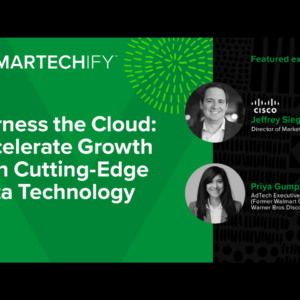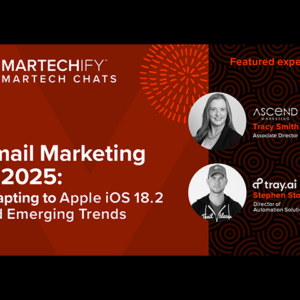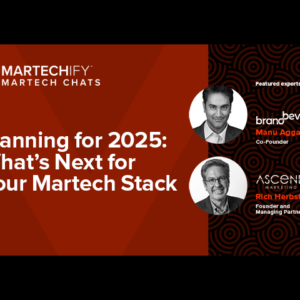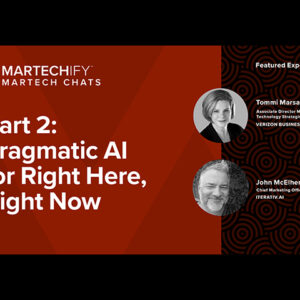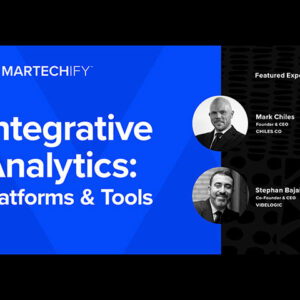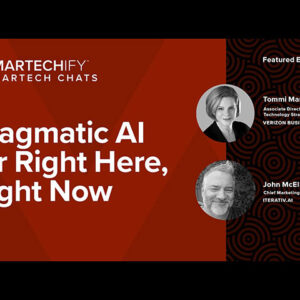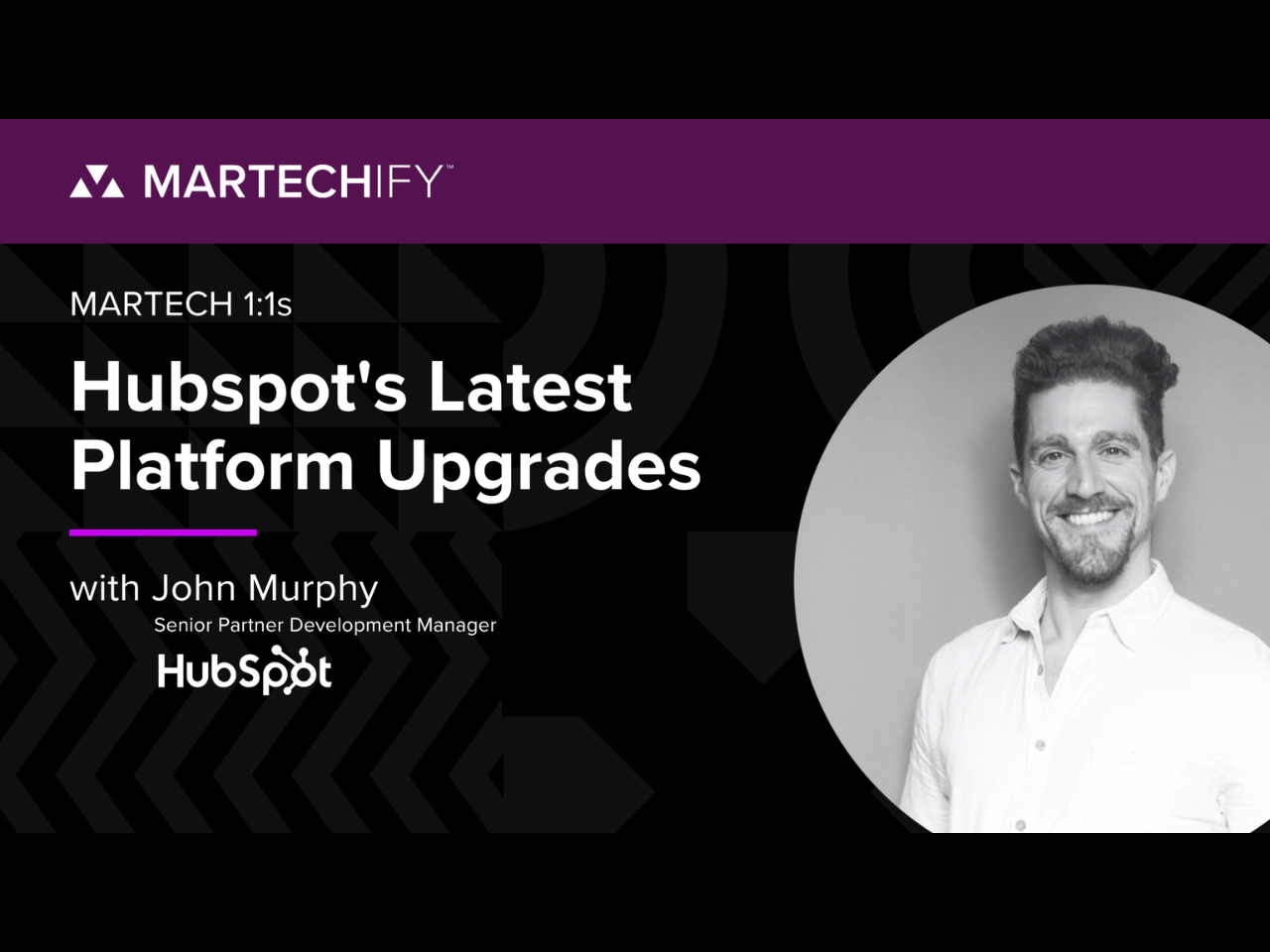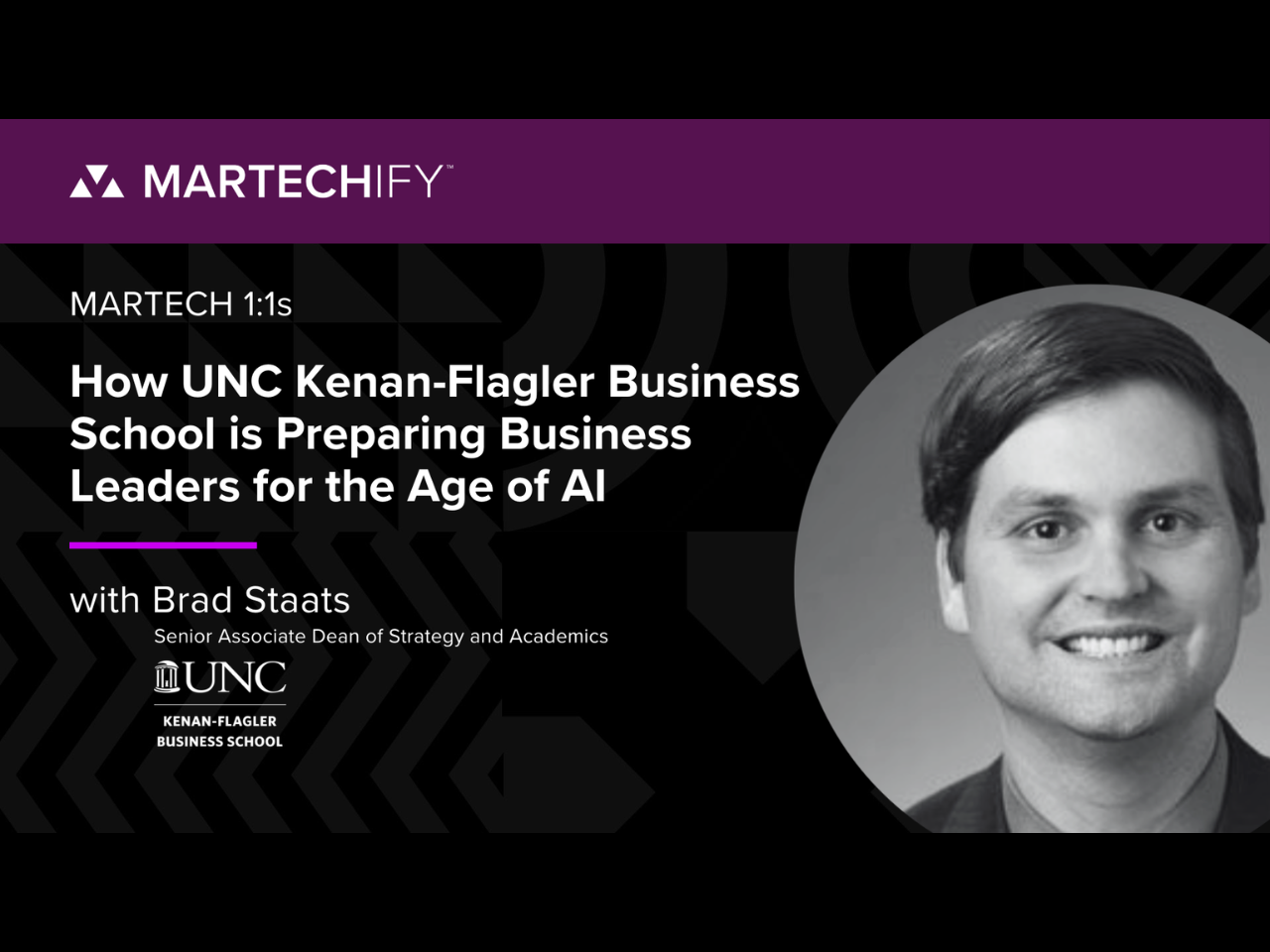A Roadmap to Martech Mastery in Fintech: Lessons from Luke Mortensen
- Luke Mortensen, Senior Director of Product Platforms, Experimentation, Personalization & Analytics at Capital One
- AI and Automation, Campaign Optimization, Customer Data Platform (CDP), Customer Experience (CX), Data Management and Analytics, Digital Transformation, Martech Stacks, Media and Adtech Optimization, Multi-Channel Journeys, Other Martech, Platform and Data Integration, Sales and Marketing Orchestration, Strategy and Trends
In an industry where the stakes are high and regulations are tight, marketing leaders in financial services must go beyond flashy campaigns and lean into the deep technical fluency and systems thinking that underpin sustainable success.
The Martechify team sat down with Luke Mortensen, the Senior Director of Product Platforms, Experimentation, Personalization & Analytics at Capital One, to create a roadmap to long-term martech mastery and discuss the tools and strategies driving innovation, scalability, and customer-centric growth in financial services marketing.
The Martechify team sat down with Luke Mortensen, the Senior Director of Product Platforms, Experimentation, Personalization & Analytics at Capital One, to create a roadmap to long-term martech mastery and discuss the tools and strategies driving innovation, scalability, and customer-centric growth in financial services marketing.
Technical fluency is no longer optional—embrace the unsexy but essential skills
Success in fintech marketing increasingly hinges on fluency with backend tools and workflows. When we asked Luke, “Which skills or experiences do you think are most underrated but essential for long-term success in marketing?”, he answered:
— End-to-end technical fluency with the creation of live customer segments in a CDP and the application of these live segments to Boolean logic used in setting up customer journey campaigns. It is unsexy but essential.
— This familiarity gives a marketer a foundation in the cultivation of data and the practical application to activation tooling.
Luke recommended that marketers of all levels, including C-suite executives, “be deeply familiar with this workflow due to its relevancy in making decisions and setting organization priorities and policies.” He added, “Many of the more complex types of experiences of the future (agents, automated personalization) can easily stand on this expertise as a foundation. Many of the insights from customer journeys and customer feedback can be applied in this flow.”
When asked which marketing tool or platform had the greatest impact on his workflow over the past year, Luke highlighted Optimizely.
“I’ve spent a lot of time on the integration of experimentation and personalization platforms in the last year. One “aha” moment I had in the last year was recognizing how functionally similar experimentation, feature flagging, personalization, multi-armed-bandit, contextual multi-armed-bandit functionality can be. They are in the end, variation management.” Luke also added, “Both Optimizely and their peer set, Statsig, Adobe, Kameleoon—they all offer these capabilities now in the same toolset.”
— End-to-end technical fluency with the creation of live customer segments in a CDP and the application of these live segments to Boolean logic used in setting up customer journey campaigns. It is unsexy but essential.
— This familiarity gives a marketer a foundation in the cultivation of data and the practical application to activation tooling.
Luke recommended that marketers of all levels, including C-suite executives, “be deeply familiar with this workflow due to its relevancy in making decisions and setting organization priorities and policies.” He added, “Many of the more complex types of experiences of the future (agents, automated personalization) can easily stand on this expertise as a foundation. Many of the insights from customer journeys and customer feedback can be applied in this flow.”
When asked which marketing tool or platform had the greatest impact on his workflow over the past year, Luke highlighted Optimizely.
“I’ve spent a lot of time on the integration of experimentation and personalization platforms in the last year. One “aha” moment I had in the last year was recognizing how functionally similar experimentation, feature flagging, personalization, multi-armed-bandit, contextual multi-armed-bandit functionality can be. They are in the end, variation management.” Luke also added, “Both Optimizely and their peer set, Statsig, Adobe, Kameleoon—they all offer these capabilities now in the same toolset.”
The tools every marketer should master
When it comes to building a future-proof martech stack, Luke doesn’t believe in chasing every new trend. Instead, he champions fluency in foundational platforms that power customer journeys, data orchestration, experimentation, and analytics at scale.
“Marketers should know how to use these five tools,” he said, naming his go-to stack:
— Braze, for journey orchestration.
— Segment or mParticle, for CDP. “Their strengths are significant. Their limitations are features, not bugs.”
— Google Analytics or Amplitude, essential for funnel reporting, pathing, and traffic source analysis.
— Optimizely, for web and product experimentation, and CMS. “By market share, this is the one to know.”
— Marketing Cloud Intelligence, previously known as Datorama, which Luke calls widely used and foundational. “Even if you end up using a different tool, they will all likely have convergence with how this one works.”
Rather than tool overload, Luke emphasizes practical literacy across key platforms. Marketers don’t need to master every feature, but understanding how these tools integrate and the problems they’re designed to solve is what truly matters.
— Braze, for journey orchestration.
— Segment or mParticle, for CDP. “Their strengths are significant. Their limitations are features, not bugs.”
— Google Analytics or Amplitude, essential for funnel reporting, pathing, and traffic source analysis.
— Optimizely, for web and product experimentation, and CMS. “By market share, this is the one to know.”
— Marketing Cloud Intelligence, previously known as Datorama, which Luke calls widely used and foundational. “Even if you end up using a different tool, they will all likely have convergence with how this one works.”
Rather than tool overload, Luke emphasizes practical literacy across key platforms. Marketers don’t need to master every feature, but understanding how these tools integrate and the problems they’re designed to solve is what truly matters.
Innovation without compromise
One of the most nuanced challenges in martech, especially in highly regulated industries like financial services, is reconciling innovation with security and compliance. Luke’s approach is both pragmatic and bold.
“Always drill down into legal blockers and validate they are real,” he said. “External data sharing with cloud martech providers is allowed if done with appropriate tokenization. Your martech tools do not need (and usually do not want) sensitive data.”
He also cautioned against an overly conservative mindset that can hinder progress. “Beware folks who justify building over licensing tools by insisting data cannot be shared.”
At the same time, ethical use of data remains paramount. Luke encourages teams to understand and mitigate the risk of demographic bias, particularly in AI-powered personalization. “Be familiar with types of data that should never be used for ML personalization due to possibility of demographic biases causing unintentional harm (Zip Code 5, etc.) and the possible remedies (Zip Code 3, etc.).”
“Always drill down into legal blockers and validate they are real,” he said. “External data sharing with cloud martech providers is allowed if done with appropriate tokenization. Your martech tools do not need (and usually do not want) sensitive data.”
He also cautioned against an overly conservative mindset that can hinder progress. “Beware folks who justify building over licensing tools by insisting data cannot be shared.”
At the same time, ethical use of data remains paramount. Luke encourages teams to understand and mitigate the risk of demographic bias, particularly in AI-powered personalization. “Be familiar with types of data that should never be used for ML personalization due to possibility of demographic biases causing unintentional harm (Zip Code 5, etc.) and the possible remedies (Zip Code 3, etc.).”
Where innovation is headed
Looking ahead, Luke sees the next wave of martech innovation being shaped by large language models, dynamic content systems, and a new generation of data architectures.
Among the trends he’s watching closely:
— Warehouse-native solutions. “I’m not entirely sure these are needed, as it feels like a step back from cloud services. But we will see a lot of this.”
— LLM-based content creation and orchestration, especially for automating large-scale personalization and content deployment.
— AI-powered content management systems designed to generate SEO-friendly articles or pages for financial services websites. “Such as generating 1,000 articles for a financial services website that attract some SEO traffic and also LLM-agent citations.”
As AI capabilities continue to expand, so does the importance of human oversight. For Luke, the future belongs to marketers who understand not just the tools, but also the implications—who ask the hard questions, validate assumptions, and stay focused on value, not just novelty.
Among the trends he’s watching closely:
— Warehouse-native solutions. “I’m not entirely sure these are needed, as it feels like a step back from cloud services. But we will see a lot of this.”
— LLM-based content creation and orchestration, especially for automating large-scale personalization and content deployment.
— AI-powered content management systems designed to generate SEO-friendly articles or pages for financial services websites. “Such as generating 1,000 articles for a financial services website that attract some SEO traffic and also LLM-agent citations.”
As AI capabilities continue to expand, so does the importance of human oversight. For Luke, the future belongs to marketers who understand not just the tools, but also the implications—who ask the hard questions, validate assumptions, and stay focused on value, not just novelty.

